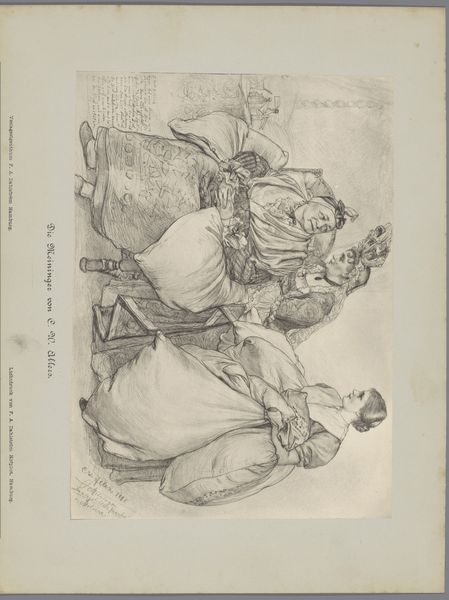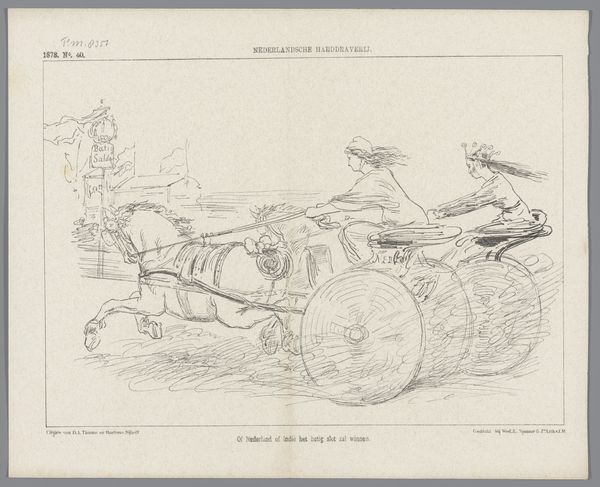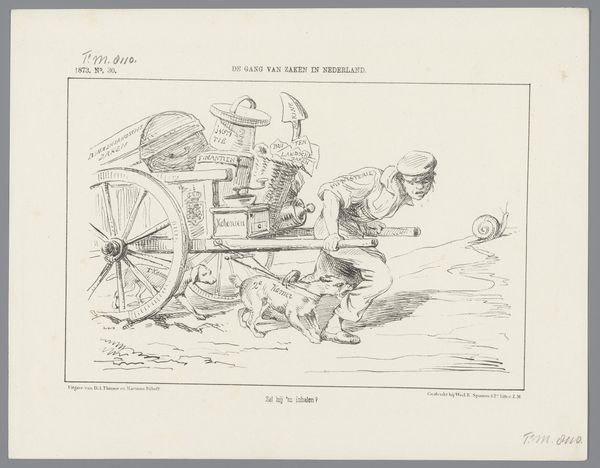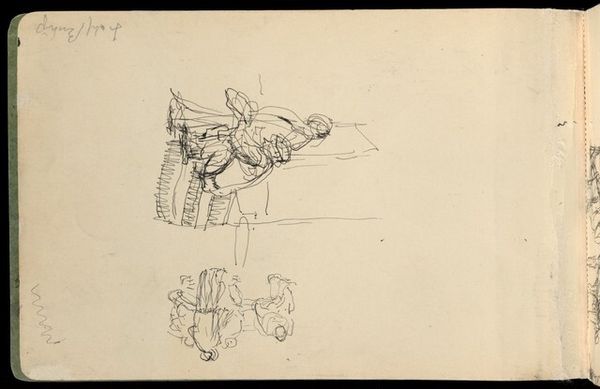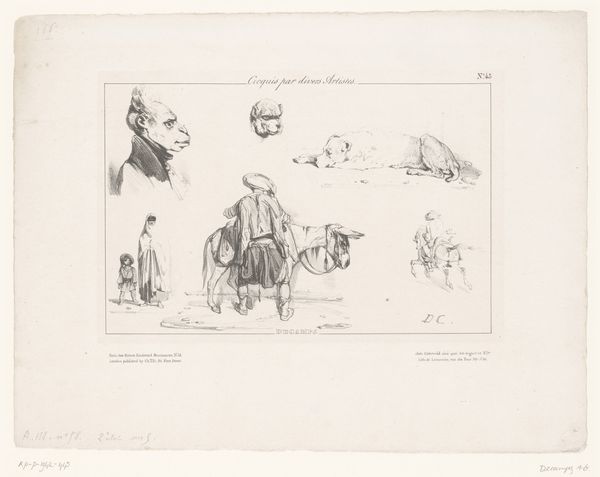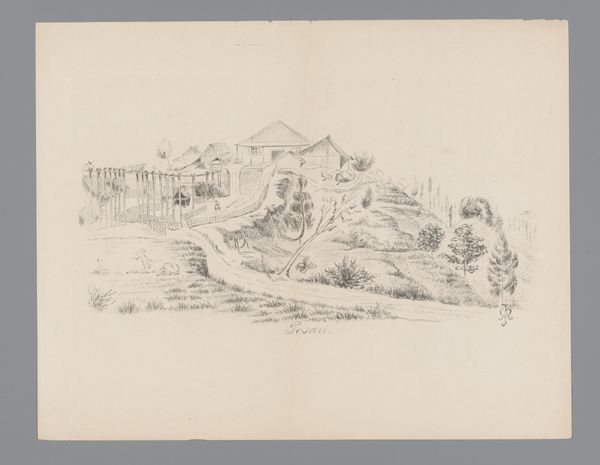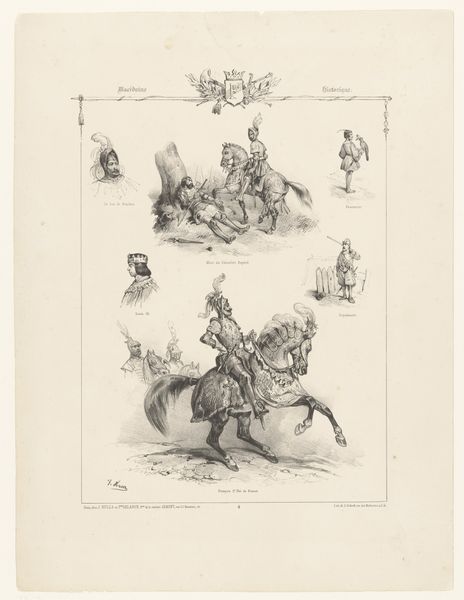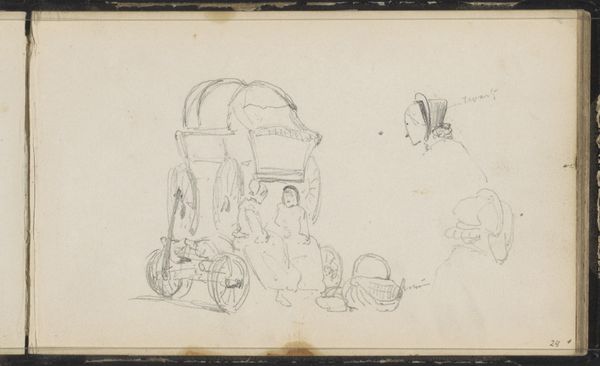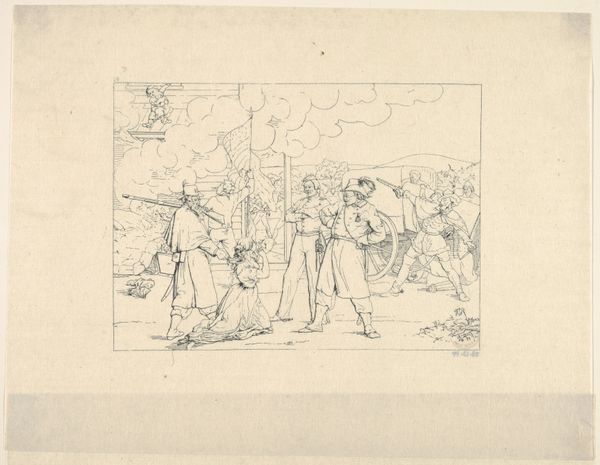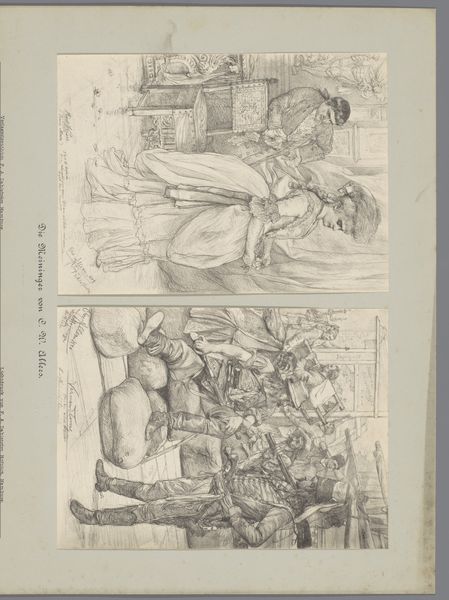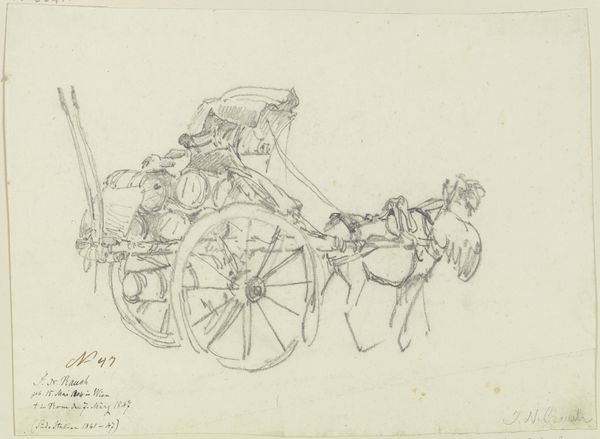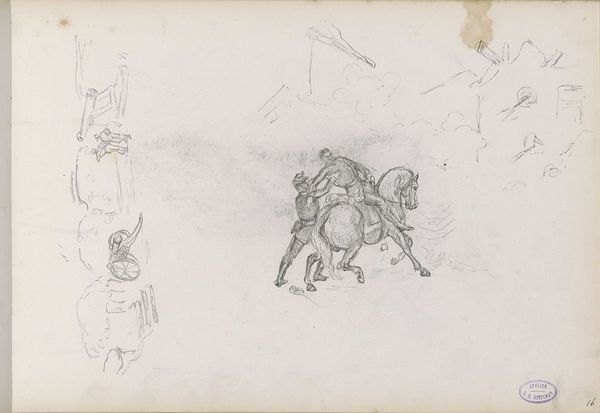
drawing, graphic-art, print, pen
#
drawing
#
graphic-art
#
aged paper
#
light pencil work
# print
#
caricature
#
sketch book
#
personal sketchbook
#
sketchwork
#
ink drawing experimentation
#
sketchbook drawing
#
pen
#
watercolour illustration
#
storyboard and sketchbook work
#
sketchbook art
Dimensions: height 297 mm, width 410 mm
Copyright: Rijks Museum: Open Domain
Editor: So, this is "Hard gaat-ie," possibly from 1896, by Willem van Konijnenburg. It seems to be a print made with pen and ink, almost like a caricature. The frantic energy of the drawing really strikes me. What do you see in this piece? Curator: This print invites us to consider the socio-economic currents of its time. Look at the materials – the pen, the printing process. This wasn't meant for a fine art gallery, but likely mass consumption as commentary or social critique. The "aged paper" as identified by AI suggests a life lived in the public sphere, perhaps pinned up in a home or shop. What can we deduce from this broader accessibility? Editor: Well, given that it's a caricature, it might have been pointing out inequalities or making a statement about class, available for anyone to see and interpret. The gentleman chasing the carriage almost seems to represent the working class struggling to keep up. Curator: Precisely. Consider the labour involved in both producing and consuming such an image. Who had access to leisurely carriage rides, and who was left behind? How does the print itself, as a manufactured object, reflect and perpetuate these power dynamics? And what about the printing process? What sort of labor went into mass-producing the image, allowing for wide distribution of this potentially subversive message? Editor: I see what you mean! Thinking about the materials and production shifts the focus from just the aesthetic to the social implications of its creation and circulation. Curator: Indeed. It compels us to examine art as embedded in material reality, as a product of labour, and as a participant in the broader dynamics of consumption and class. This lens challenges the romantic view of the artist, directing attention to a more complex picture of artistic production. What's your perspective now? Editor: It really changes how I see it. I'm much more aware of how this simple drawing is connected to wider issues of production and social commentary. Thanks for pointing that out! Curator: My pleasure. By considering these material and social aspects, we can achieve a richer and more nuanced appreciation of art's role in society.
Comments
No comments
Be the first to comment and join the conversation on the ultimate creative platform.
